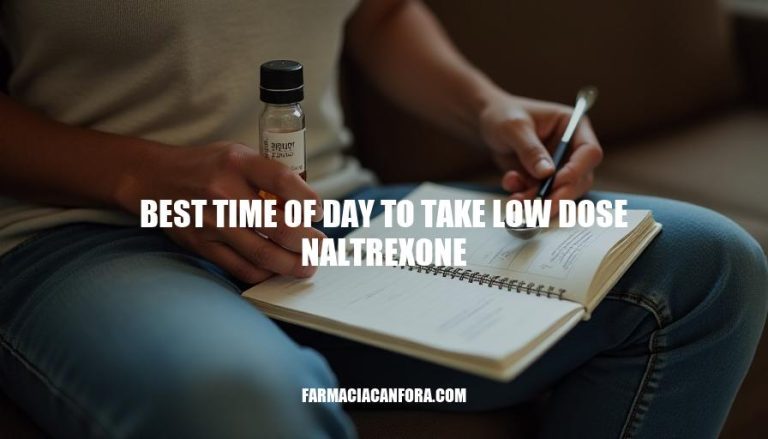


Low-dose naltrexone, or LDN, is a medication that’s usually used to treat opioid and alcohol addiction. But at lower doses, it can help with chronic pain, autoimmune diseases, and even mental health issues. It works by helping the immune system, reducing inflammation, and making your body produce more natural painkillers.
Research findings and clinical studies indicate that the best time of day to take low dose naltrexone (LDN) can vary based on individual patient needs and preferences. Historically, LDN has been prescribed at bedtime because endorphin production in the body peaks during the night. This timing aligns with the drug’s mechanism of action, as LDN works by temporarily blocking opioid receptors, which leads to an increase in endorphin production.
However, some patients experience sleep disturbances when taking LDN at night, leading to recommendations to take it in the morning instead.
Clinical studies have shown that LDN can be effective whether taken at night or in the morning, with patient feedback indicating good results with both methods. The choice of timing often depends on the patient’s lifestyle and any side effects experienced.
Circadian rhythms play a significant role in drug effectiveness, as metabolic cycles in the liver can influence how drugs are metabolized. Research has shown that more than 300 liver genes are under circadian control, affecting drug metabolism and availability.
This means that the timing of LDN administration could impact its efficacy and side effects.
Pharmacokinetic studies of LDN reveal that it is absorbed and metabolized in the liver, with its effects lasting for about 24 hours. The drug’s half-life and peak plasma concentration can vary based on the time of administration, but overall, LDN maintains its therapeutic effects regardless of whether it is taken in the morning or at night.
In summary, the optimal timing for taking LDN depends on individual patient factors, including circadian rhythms, patient feedback, and the drug’s pharmacokinetics. Both morning and nighttime administration have been shown to be effective, with the choice of timing tailored to the patient’s needs and preferences.
Low-dose naltrexone (LDN) is a medication that can be effective in treating chronic pain, autoimmune diseases, and mental health issues, among other conditions. Research suggests that the best time to take LDN varies from person to person, depending on individual needs and preferences.
Historically, LDN has been prescribed at bedtime because endorphin production peaks during the night, aligning with the drug’s mechanism of action. However, some patients experience sleep disturbances when taking it at night, leading to recommendations to take it in the morning instead.
Clinical studies have shown that LDN can be effective whether taken at night or in the morning, with patient feedback indicating good results with both methods. The choice of timing often depends on lifestyle and any side effects experienced.
Circadian rhythms play a significant role in drug effectiveness, as metabolic cycles in the liver can influence how drugs are metabolized. Research has shown that more than 300 liver genes are under circadian control, affecting drug metabolism and availability.
Pharmacokinetic studies of LDN reveal that it is absorbed and metabolized in the liver, with its effects lasting for about 24 hours. The drug’s half-life and peak plasma concentration can vary based on the time of administration, but overall, LDN maintains its therapeutic effects regardless of whether it is taken in the morning or at night.
Ultimately, the optimal timing for taking LDN depends on individual patient factors, including circadian rhythms, patient feedback, and the drug’s pharmacokinetics. It is essential to consult with a healthcare provider to determine the best time to take LDN based on personal needs and preferences. By working together with their healthcare provider, individuals can maximize the benefits of LDN and achieve optimal results.